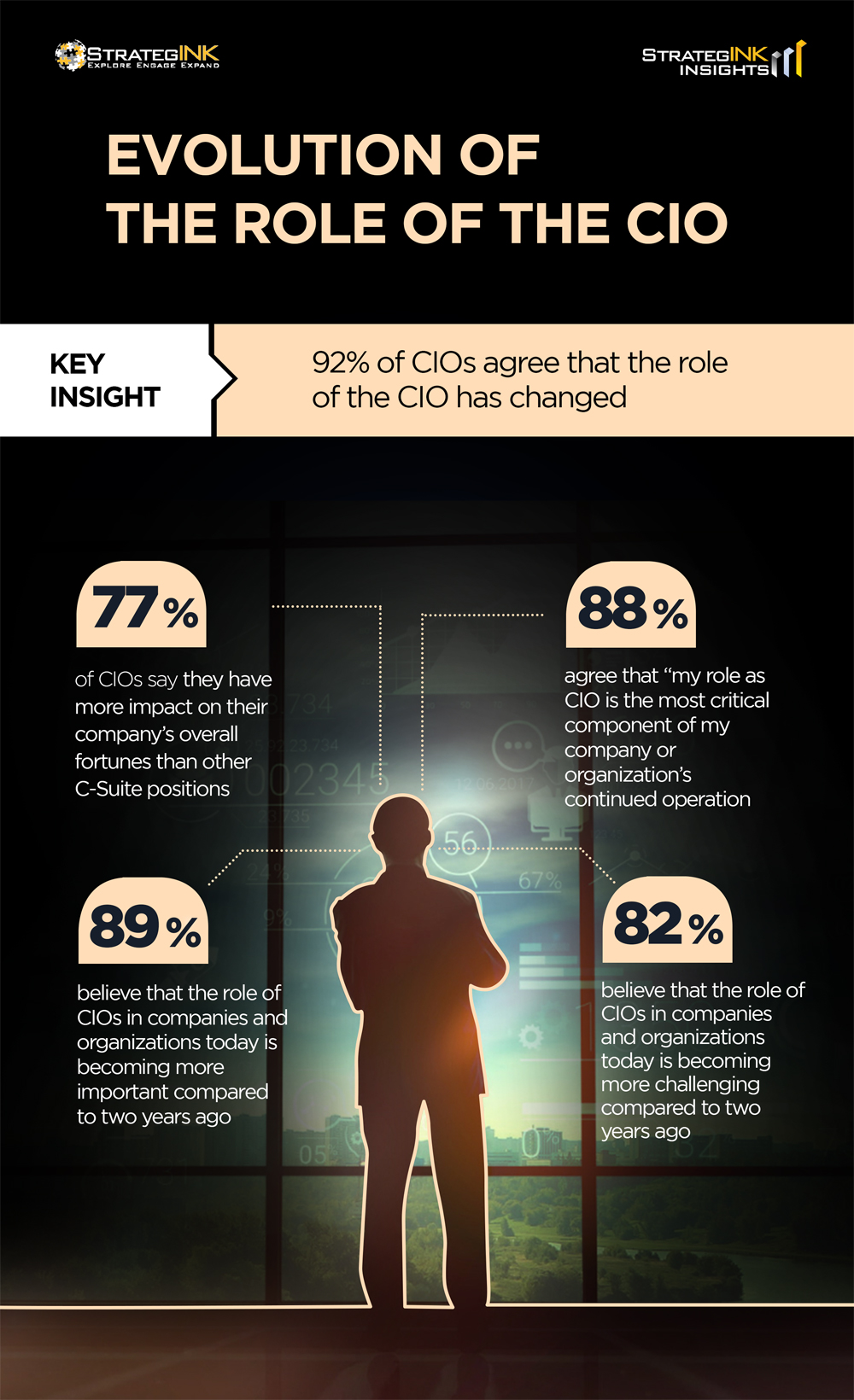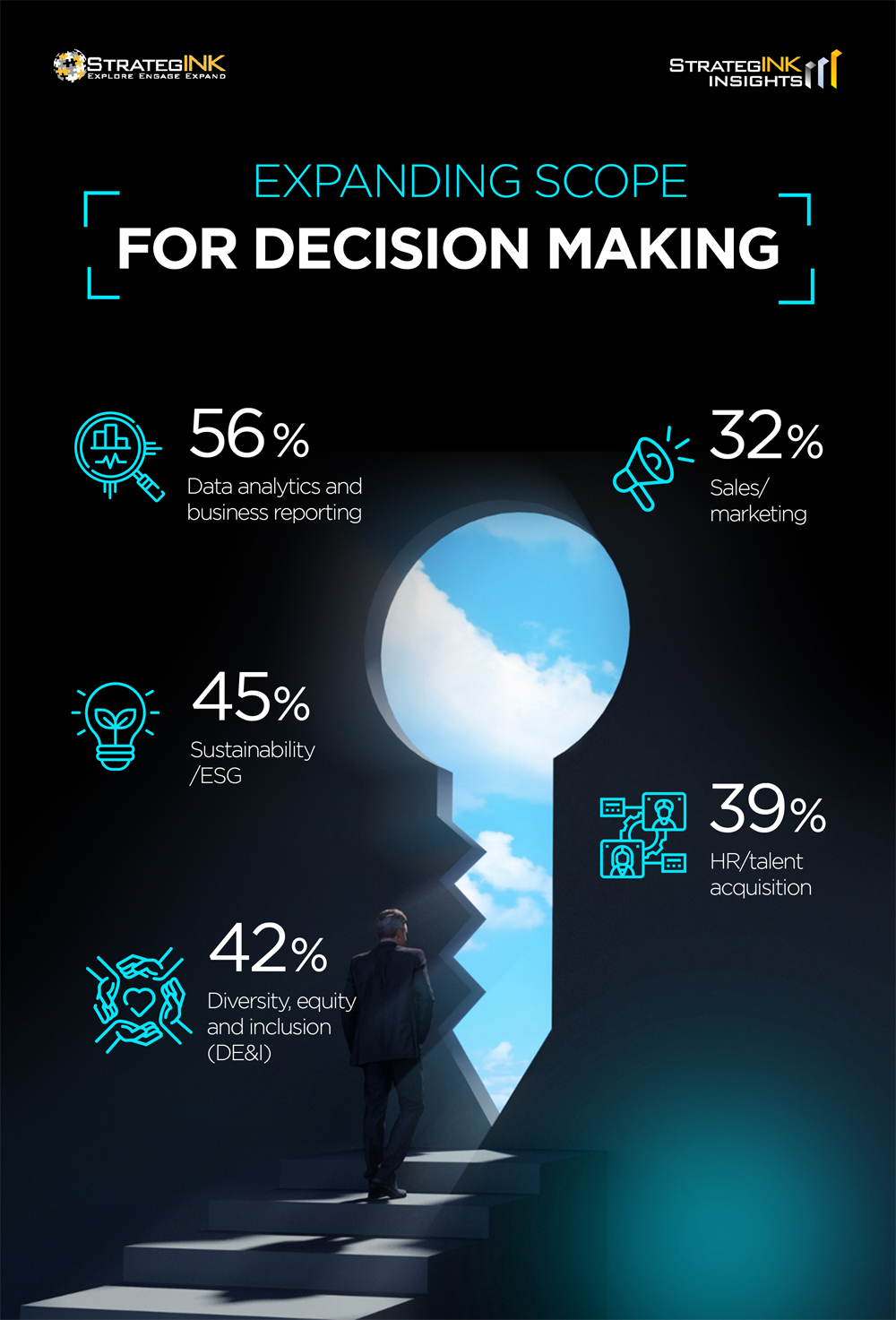
Conventionally, the role of the CIO was seen to be one which focused on ensuring seamless adoption and implementation of the information technology systems within the organization. However, with most enterprises adopting a goal to become digitally native in the next few years, the role of the CIO is expanding significantly, making the CIO a key decision maker in business strategizing, prioritization and other core activities. This has primarily accompanied the transition in technology being on the periphery of businesses to now becoming the core of strategy, operations and growth. This article will focus on how the role of CIOs will continue to expand beyond IT and the avatars it will don in 2023.
Evolution of the role of the CIO: Key insights
92% of CIOs agree that the role of the CIO has changed
If you look at the data, especially over the last 2 years, you will realize that the role of the CIO has not only increased in scope of what encompasses their responsibilities, but has also magnified in their influence and decision making power within the organization. Here are a few points that illustrate the evolution of a CIO:
It is quite evident that as organizations are maturing and evolving in their digital journey, the role of the CIO is moving along at a similar pace. Invariably, with the addition of decision making responsibilities of non-traditional sectors, many CIOs believe that their role, while becoming more important, is also becoming more challenging as it expands.
CIO of 2023: Non-traditional areas of influence
While building the IT strategy, technology procurement and implementation will continue to thrive under the purview of a CIO, 2023 will see CIOs gain new clouts of influence as being uniquely positioned to facilitate a convergence of technology, business growth and human capital. Some of the non-traditional areas of CIO role evolution include:
Co-creation of new business models
Finally, as technology is becoming a core force driving business value, CIOs will be increasingly expected to co-create business models and new revenue streams with other C-suite executives. CIOs are expected to understand and leverage the strategic value of different technology interventions to drive business success by introducing new ways of doing business supported by enterprise wide collaboration. Thus, CIOs today need to move beyond expertise in how a technology intervention will impact the technology architecture of an enterprise to decoding its impact on overall business landscape and enterprise economy.
Expanding scope for decision making
To begin with, the scope of decision making is expanding rapidly for CIOs and will continue to grow in 2023. In addition to the traditional decision making for technology investments, CIOs are also being trusted with decision making on other key strategic priorities for business reporting, data analytics, etc. Some of the top areas in which CIOs are today making decisions as opposed to their traditional areas of influence include:
Thus, it is evident that under the changing scope, the decision making powers of the CIO are going beyond technology procurement to focus on business development across all aspects.
Leading a digital first culture
Next, CIOs are increasingly being positioned as the custodians of creating a digital first culture. This not only involves leveraging new technology but also encouraging a culture that keeps data at its helm. CIOs are being heralded as the forces who can create a culture which is digitally driven, pro learning and data centric. They are increasingly being seen as those leading the digital transformation agenda in the organization, rather than just managing the IT operations.
Bridging talent gap
Another area where the CIOs are gaining influence is talent management. While CIOs aren’t replacing the HR or people managers, they are all set to play a complementary role when it comes to talent management. On the one hand, as custodians of the digital first culture and new business-technology priorities, CIOs are uniquely well-versed with the talent needs for their organization and can guide the recruiters on exactly what type of profiles need to be sourced. On the other hand, when it comes to upskilling or filtering applications, CIOs have the requisite knowledge on the ideal next steps. As organizations are moving towards niche technical upskilling, the role of the CIOs is expanding to address the talent and skills gap, either by adequate hiring or by leveraging digital automation.
A new CIO avatar for 2023
Invariably, as the role of technology is expanding its influence in enterprises, the role of the CIO will have a similar effect. As the value generated by technology across the enterprise is increasing, so is the value of CIOs. Technology today encompasses an impact on customer relations, workforce management, revenue generation and much more. In the last few years, most digital native enterprises have had CIOs/ CTOs at the helm of decision making as founders. Enterprises traversing their digital transformation journey need to treat this trend as an imperative for 2023 and lead CIOs to the board room to increase their decision making power and influence to make digitalization a broad agenda. Thus, the CIO in 2023 will continue to increase their influence clout to develop digital intelligent enterprises where technology drives profits, revenues, people, processes, policies, partnerships and culture.







